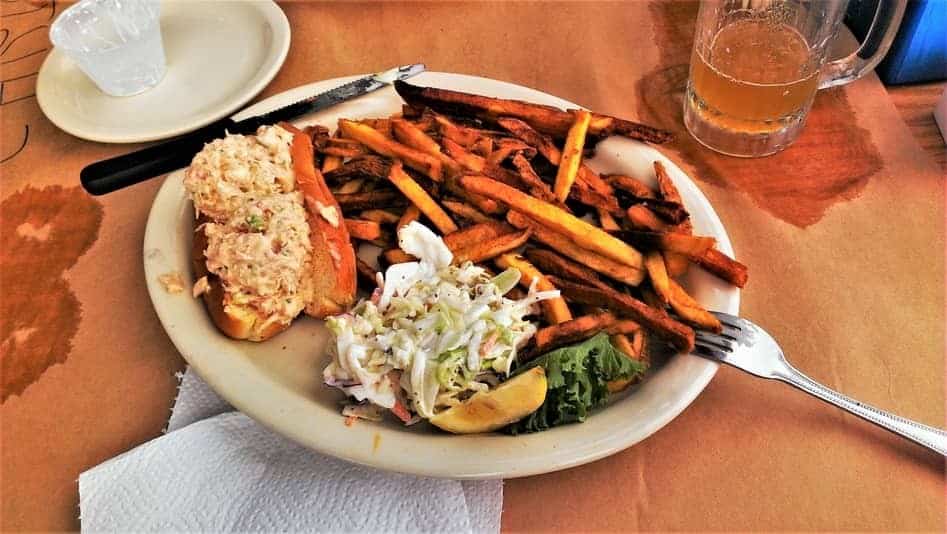Groceries (Lebensmittel)
Many Americans dream of life in Europe with an image of shopping for cheese at the local market, conversing with the farmer that milked the cow and taking home a chunk of smelly deliciousness. I know I did.

But grocery shopping in Germany is usually a very modern affair. Granted, there are German farmers’ markets, usually on the weekends or sometimes throughout the week. You should go and indulge in fresh produce, but know that most people do most of their shopping in large chain grocery stores that look similar to chains in the UK, the USA, etc.
Here is a rundown of some of the typical grocery stores in Germany, and what you can expect from each of them.
Discounters (Lidl, Netto, Aldi): Don’t sniff at discount grocery stores; most people shop here. You can complete your shopping list with items at their lowest price. Fruits and veggies don’t always look their best, the aisles are crowded, presentation is nil and customer service can fall to a new low, but the first time you make it through a Lidl visit without getting impossibly frustrated you have taken a positive step towards integration. Watch for special promotions like “America Week” where Americanesque items (from a brand bizarrely named “McEnnedy’s”) are sold.
Major Grocery Stores (Real, Rewe, Edeka, Kaufland): These grocery chains most resemble something you’d find in the States or the UK. They are usually large and have (almost) everything you want. Some chains, like Real (ray-all), sell everything from groceries to bicycles to underpants. While the selection is much greater than at the discounters, it is still more limited than American grocery stores. Look for small sections of international foods like the “America” shelf at Real. Not everything will be authentic or inexpensive, but it can satisfy a need.
Bio/Natural/Organic: Bio (BEE-oh) refers to organic goods in Germany, and Bio markets can be found in every town. There are usually some bio goods in major markets.
Turkish, Asian and African Markets: Turkish markets are plentiful around my home in Berlin-Wedding, and they are my go-to for beef, tortilla-like breads, and unusual cheeses and pickled items. Asian markets offer the Asian staples missing from the other grocery stores plus surprising finds like cilantro, peanut butter, and root beer. African shops are harder to find, but provide a different array of options.

Online & Specialty: Even though you can find most things in Germany, you can’t find everything. While you should try to adapt to your hot dogs becoming Bratwurst, most people have that one item they just can’t live without. Specialty retailers such as Berlin’s enormous KaDeWe (Kaufhaus des Westens) department store sell many of the goods you may be missing – for a high premium. KaDeWe’s sixth-floor gourmet section is a wonder to behold, but the prices may limit how often you indulge in this guilty pleasure. Most German department stores have a grocery store (usually in the basement, unlike KaDeWe) and a “gourmet food” section.
Every American expat bemoans the lack of Mexican food in their German city (although that is changing), but I have found my way around that by cooking my own versions with items carefully pulled from a variety of ethnic and specialty shops. I shared my top finds on Where to Buy Mexican Food in Berlin.
You should also look online where a bite of home can be shipped directly to your door. Try out the British Corner Shop, Food from Home, AmericanFood4U or find more options on ToyTown and Expat Mom.
Personally, I do my shopping at all of these stores. There is a Bolu (Turkish Market), Lidl and Rewe in a line by my house and on some shopping days I’ll go to all three. And I never miss a chance to buy some local goods at the Turkish Market on Tuesdays and Fridays on Maybachufer.
Pfand
Despite Berlin’s messy streets, you might notice an absence of bottles. Leave an empty glass beer bottle by the public trash and come back 10 minutes later to find it gone. This is because of the very effective Pfand (deposit) program. Most glass and plastic bottles come with a small (between .08-.25 euro cent) deposit which can be retrieved when you return the bottle.
Despite Berlin’s messy streets, you might notice an absence of bottles. Leave an empty glass beer bottle by the public trash and come back 10 minutes later to find it gone. This is because of the very effective Pfand (deposit) program. Most glass and plastic bottles come with a small (between .08-.25 euro cent) deposit which can be retrieved when you return the bottle.
At home, this means you might collect a bit of a Flaschenwald (bottle forest). When the pile has become unbearable, bag up the bottles and take them back to the store. There you will find a machine that accepts the bottles and offers a receipt of the money you are owed. Take that to the register and voila! You’ve got the Pfand back.
As I briefly mentioned before, this also helps keep the streets clean. In cities like Berlin, bottles are swiftly picked up for a little extra cash – or a lot as you see teetering towers of bottles erupting from grocery carts outside of football games and festivals.
Shopping Carts
It can be hard to admit when the Germans are right, but they are simply right when it comes to how to do shopping carts. Gone are the days of carts scattered about the parking lot! Carts have all found their place in Germany because of a simple coin deposit system. To take out a cart, simply deposit a 50 cent or 1 euro coin into the handle and it is released from its shackles for you to take around the store. When you’ve finished, park it in the line of other carts and re-insert the metal plug to retrieve your coin.
It can be hard to admit when the Germans are right, but they are simply right when it comes to how to do shopping carts. Gone are the days of carts scattered about the parking lot! Carts have all found their place in Germany because of a simple coin deposit system. To take out a cart, simply deposit a 50 cent or 1 euro coin into the handle and it is released from its shackles for you to take around the store. When you’ve finished, park it in the line of other carts and re-insert the metal plug to retrieve your coin.
One of the best gifts I’ve gotten here has been a key chain with the perfect sized token for the shopping cart. No more searching for a coin!
Checking Out
Another mighty obstacle you will inevitably face in the grocery store is checking out. Unlike the USA where you hardly lift a finger as the cashier and bagger do all the heavy lifting (literally), you will be the one sweating it through check out.
Another mighty obstacle you will inevitably face in the grocery store is checking out. Unlike the USA where you hardly lift a finger as the cashier and bagger do all the heavy lifting (literally), you will be the one sweating it through check out.
TIP: Bring your own cloth/canvas bags! You’ll have to buy bags if you don’t.
After you load the conveyor belt with the German next in line standing far too close to you, you need to be on guard for the moment it is your turn. As soon as the transaction before you if finished you should be ready to jump into action, loading the items from the tiny end of the belt to the bags you brought. (Didn’t bring bags? Don’t forget to buy a few which range from a few pennies to a euro – depending on the bag’s durability – at the beginning of the check-out line.) If you move too slowly, be prepared to have the next person’s items rained down upon you, or at the very least be the receiver of some nasty looks.
Fellow Customers & Customer Service
As discussed on the Germany Way Expat Blog (again and again), customer service in Germany can be a bit gruffer than in the USA. Be prepared.
As discussed on the Germany Way Expat Blog (again and again), customer service in Germany can be a bit gruffer than in the USA. Be prepared.
Workers will expect you to move as they stock the shelves, greetings and niceties are rare and I was particularly shell-shocked the day a woman grabbed the last hunk of Gouda straight from my out-stretched hands. Yes, a fellow customer. The perceived rudeness is not restricted to the employees.
After the infamous cheese-grabbing incident, mere weeks after I had moved to Berlin, I wasn’t sure if I was cut out for this country. If a simple grocery shop left me near tears, how could I handle living here?
Obviously, I got over it. I learned to ignore people standing “too close”, moved out of the way of the giant trolleys and developed faster reactions to grab the cheese first. While the standards may be different from what you’re used to, it is vital not to take it personally and adjust. And there are significant positives to grocery shopping in Germany like the low-cost of food items and true seasonality.
For a humorous take (with many brilliant insights), refer to “Berlin Supermarkets: A User’s Guide” from A More Quiet Place.
Shopping Hours
As Hyde noted in our complete guide to Shopping Hours in Germany, “For almost 50 years, shopping hours in Germany were the most restrictive in Europe.” Restrictions have eased since 2006, but new expats may still chafe at stores closing on Sunday and shuttered at 20:00. In general, expect grocery stores in Germany to be open from 7:00 to 20:00. Smaller towns may have much shorter hours. Some larger stores like Rewe may stay open until midnight.
As Hyde noted in our complete guide to Shopping Hours in Germany, “For almost 50 years, shopping hours in Germany were the most restrictive in Europe.” Restrictions have eased since 2006, but new expats may still chafe at stores closing on Sunday and shuttered at 20:00. In general, expect grocery stores in Germany to be open from 7:00 to 20:00. Smaller towns may have much shorter hours. Some larger stores like Rewe may stay open until midnight.
Watch for a Verkaufsoffener Sonntag (shopping Sunday) when larger stores and malls have special opening hours. And if you find yourself in a pinch on a regular Sunday, cities usually have a few open grocery stores. For example, the shopping center at Berlin’s Einkaufsbahnhof, and a handful of other stores (usually located at train stations) are open for limited hours on Sundays. Berlin also has numerous “Spätis” – a type of convenience store that stays open when regular shops are closed.







